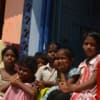
One of the great hopes for aid transparency is that it will help donors make better decisions about where to allocate their aid. Collectively, this has never been something that the international aid system has done well. One of the most persistent problems in the sector has been that some countries (and some geographic areas within them) have been “over-aided,” whilst others have been neglected despite being equally in need of assistance.
There is no doubting that a structural cause of this problem has been the lack of comprehensive, up-to-date, geographically coded information about where development agencies are already working. But this is not the only cost of poor data.
In the United Kingdom, there has been a particular interest in aid allocation issues recently, as the government published its hotly awaited review of bilateral aid. This would decide which of the U.K. Department for International Development country programmes would be discontinued over the next four years, and how much money the remaining country programmes would receive.
From the point of view of U.K. NGOs, the key question to ask of the review was whether U.K. aid was going to be given where it was needed most (ie. to the poorest and most vulnerable), and whether disproportionately high amounts of aid were going to be given to countries where the U.K. has its own national security interests at heart. Looking at the figures, the answers to these two questions seem to be a) yes, as much as it ever has; and b) basically, no.
From CAFOD’s analysis, the correlations between aid allocations and the development need (measured according to a range of indicators) are roughly the same as they were prior to the review – despite a major shift in overall allocations and the closure of 16 bilateral programmes; and there doesn’t seem to be evidence of an overall bias of giving more aid to countries with high U.K. security interests.
It has been a very challenging business to scrutinise though – not least because of issues of information. We pointed to a discrepancy between the high levels of U.K. aid to Pakistan (the budget here will more than double over the next four years), and the levels of development need in this country (these are comparable, on a range of indices, to several countries where DfID are halting their bilateral programmes). Government officials responded by saying that Pakistan had been neglected by other donors, and that the U.K. therefore needed to step into the breach. Without a fully comprehensive mapping of global aid – cross-checked against a global comparison of development needs – this is not easy claim to check. Indeed, we are some way off being able to definitively identify which countries have insufficient aid – step 1 in the Accra commitment to address the issue.
There is also a collective action problem at work. The U.K. is withdrawing its bilateral programmes from several very poor countries – most notably Niger and Burundi – on the basis that their programmes there have always been small, and other donors are better placed to take the lead. But will these donors fill the gap left by DfID? Will they actually take account of other donors’ projected spending in their own planning? The best source we have had on this – the DAC report on predictability – has been blighted by confidentiality requirements which prevent country breakdowns by donor. Whilst we can expect a certain amount of coordination in-country, it will be a struggle to organise the division of labour at macro-level without better information on where the gaps are looking forward – and the gains will be few until everyone starts doing it.
A lack of information on the overall shape of aid allocations is not only preventing donors from collectively making good decisions about where to spend their money: It is also creating a major reputational risk for the sector. Where it is not possible to tell whether donors are giving money to a country because they have their own national interests at heart – or because they are making up the shortfall in a country neglected by others, there will continue to be innuendo and sometimes outright accusation around the “hidden motives” behind aid. Sometimes these will be bang on the money – and there is a long history of donor self-interest in aid. At other times, however, these will based more on imagination and conjecture than on evidence: We find a story that makes sense of the little information that is available – and sometimes give colour and coherence to events that might actually be accidental and improvised. It’s a risky business. Like the spectre of corruption in aid, the charge that aid is nothing more than a manipulative tool for foreign policy is an alluring means for sceptics to make a wholesale dismissal of the entire aid sector – and paint its defenders in the familiar stereotype of left-wing naivety.
With fragile support for aid amongst Northern taxpayers, the need for transparency in the sector is more urgent than ever. Aid transparency stands to be a driver of the effort to make the distribution of aid between developing countries fairer. It is also the critical ingredient for high-quality scrutiny of such decisions, and key to ensuring that information gaps are not filled by false logic.








